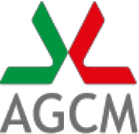OPINION ABOUT NEW BANK CHARGES
PRESS RELEASE
PRESS RELEASE
BANK CHARGES: ANTITRUST AUTHORITY - NEW MECHANISMS HAVE NEGATIVE IMPACT ON CONSUMERS
Opinion issued to the Government, Parliament and Banca d'Italia. Up to 15-fold cost increases in Maximum Overdraft Charges for customers in the red
New bank charges that replace Maximum Overdraft Charges are more costly for consumers. This opinion was issued to the Government, Parliament and Banca d'Italia after the Antitrust Authority completed a survey of the terms and conditions applied to the customers of seven different banking Institutions and their respective affiliates.
The study covered all major operators in the sector and is considered to be representative of the entire banking system. The findings revealed that the charges for covering temporary overdrafts on current accounts have increased for average account holders.
In five of the seven cases, the new economic terms and conditions turned out to be two to fifteen times worse than before, as based on the length of time and total amount for which an average account holder without a line of credit remains 'in the red.' The new conditions were judged to be equivalent to the previous regulatory regime in a sixth case, and to be more advantageous in only one case.
For customers with a line of credit, on the other hand, the situation worsened considerably relative to the simple Maximum Overdraft Charges in use until Law no. 102 of August 3rd, 2009, came into effect. The maximum overall service fee for making funds available was set at 0.50% of the credit-line amount per quarter, on penalty of nullifying the obligation to pay. The change represents a reduction in the previous variable rates, which ranged from 0.90% to 1.50% per quarter and from 3.60% to 6% annually. According to Antitrust Authority findings, these rates were only advantageous when the credit-line itself was overdrawn. For sums used within the limits of the credit line, alternatively, these rates were always heavier than the Maximum Overdraft Charges, resulting in what was in effect the penalization of virtuous customers. When the maximum quarterly use was equal to the total amount of the credit line, the amount subsequently debited for the newly formulated charges turned out to be equivalent to the Maximum Overdraft Charges.
The new charges also employ a regressive structure that results in heavier penalties, on average, for customers with smaller credit lines. The charges introduced last August have shown themselves to be more advantageous, but only when approximately half or more of the credit line has been used.
Rome, 29th December 2009

